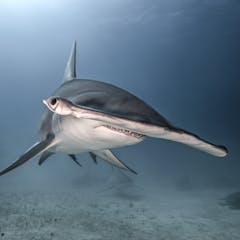
Articles sur Fossils
Affichage de 61 à 80 de 386 articles

A closer look at these fossil bones revealed more than the suggestion of a previously undescribed species - it pointed to the individual animal having suffered with osteoarthritis.

The feet of a bird tell us a lot about its life. Newly described, the fossil feet of the ancestors of modern birds reveal how superbly adapted they were to their world.

Tiny plant and insect fossils provide unique insight into an ancient ecosystem that would, later, be altered by climatic shifts.

Despite causing hurt and offence, the legality of removing a whale fossil from the West Coast remains unclear. So what rules and laws govern amateur fossil hunting, and should they be strengthened?

Track marks are a way to fill in the blanks that sometimes exist in the body fossil record.

Without intervention, the rock may have been destroyed by high tides and storm surges.

Fossils of a giant killer mosasaur have been discovered, alongside the fossilised remains of its prey.

Derided as ‘toys for the rich,’ the specimens being bought and sold raise broader questions about the relationship between science and capitalism.

The findings will help us better understand how biodiversity responds to a changing climate over time.

Palaeontologists studied Pantolambda fossils in forensic detail to learn about its lifestyle.

The African continent is a rich repository for dinosaur fossils, including teeth and track marks.

New research shows our oldest ancestors were able to walk as well as evolve in trees.

Millions of years on. modern frogs and toads still haven’t learnt you can have too much of a good thing.

The fossilised seal traces date back about 75,000 years.

Fossil footprints are a treasure chest of information.

The discovery of a fossil over 500 million years old reveals new information. Its brain and nervous system are remarkably preserved, filling in some gaps in what we know about arthropod evolution.

The first hammerhead shark was likely the result of a genetic deformity. A biologist explains how shark DNA reveals hammerheads’ history.

Megalodon, the world’s largest known shark species, swam the oceans long before humans existed. Its teeth are all that’s left, and they tell a story of an apex predator that vanished.

Warm-bloodedness is the key to what makes mammals what they are today. That’s why working out when it emerged in mammal ancestors matters.

The newly discovered species – Qikiqtania – highlights evolution’s twisty, tangled path.
